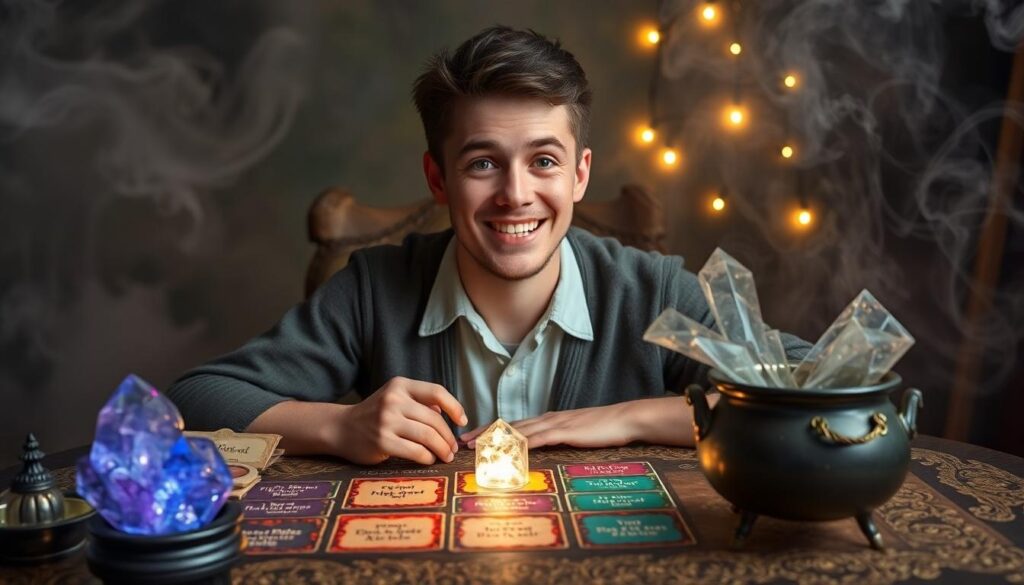Are you ready to challenge your mind with some enchanting brain teasers? Magic riddles combine the wonder of illusion with the satisfaction of solving puzzles, creating an experience that’s both mystifying and rewarding.
We’ve collected some of the most captivating magic riddles that will leave you scratching your head and smiling with delight when you discover the answers. These aren’t just ordinary brain teasers—they’re magical conundrums designed to make you think outside the box and see things from a different perspective. Perfect for entertaining friends, testing your family’s problem-solving skills, or simply giving your brain a fun workout.
10 Mind-Bending Magic Riddles to Test Your Logical Thinking
- The Vanishing Card
Ready to challenge your perception? In this riddle, you’re shown 52 cards, then one is secretly removed. After quickly displaying the remaining cards, you must identify which card disappeared. This test requires exceptional observation skills and memory, making it a favorite among magicians for demonstrating “mental magic.”
- The Unbroken Chain
Picture four separate chains, each with three links. You need to form a complete circle using all chains by opening and closing exactly three links. Most people attempt to open one link from each chain, but the actual solution requires more strategic thinking about link distribution.
- The Mystic Number Prediction
We’ve seen this stumping audiences for years. Someone thinks of any three-digit number, performs exact mathematical operations, and the magician correctly predicts the final result. This works because of hidden mathematical properties that guarantee a exact outcome regardless of the starting number.
- The Impossible Knot
Take a rope with both ends held by a volunteer. Without releasing the ends, a knot magically appears in the middle. This riddle isn’t just a trick but a topological puzzle that challenges spatial reasoning and tests your ability to visualize dimensional transformations.
- The Telepathic Book Test
A participant selects any word from any page in a book, yet the performer divines their choice. Solving this mystery requires understanding both psychological principles and subtle information gathering techniques rather than actual mind reading.
- The Wandering Rings
Three solid rings mysteriously link and unlink even though appearing to have no openings. This ancient puzzle dates back to Chinese linking rings and tests your ability to question appearances and understand how objects can interact in seemingly impossible ways.
- The Coin Through Table
A coin visibly passes through a solid surface. Understanding this riddle involves recognizing how skilled manipulation and misdirection can create convincing illusions that defy our expectations about physical objects and their properties.
- The Multiplying Billiard Balls
One ball becomes many as they appear from nowhere. The solution combines elements of physics, sleight of hand, and psychological misdirection, making it an excellent test of how well you understand the limits of your own perception.
- The Levitating Card
A playing card floats in midair, seemingly defying gravity. Figuring out this riddle requires lateral thinking about invisible forces and hidden mechanisms, challenging your ability to look beyond the obvious visible elements.
- The Restored Rope
A rope is cut into pieces then magically restored to its original form. This classic tests your understanding of object permanence and material properties, requiring you to consider how objects can appear transformed while maintaining their essential structure.
The History and Psychology Behind Magic Riddles
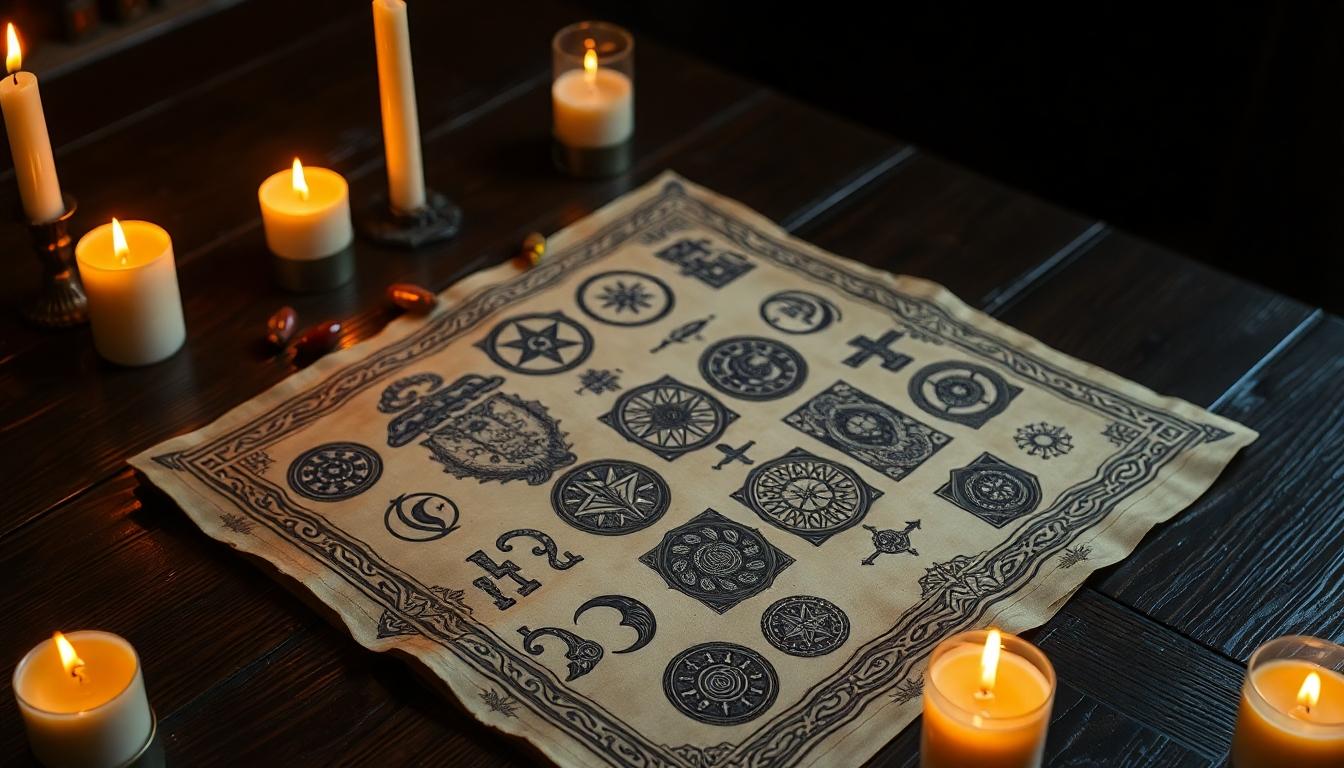
Ancient Origins of Magical Puzzles
Magic riddles have fascinating roots that stretch back to our earliest civilizations, where they seamlessly blended mysticism with intellectual challenges. The term “magic” itself comes from the ancient Greek word μάγος (magos), originally referring to Persian priests before becoming associated with unconventional or deceptive practices, as highlighted in Sophocles’ classic work Oedipus Rex. Riddles actually predate written history, with Egyptian examples discovered on papyri dating back to the 13th century BCE. Ancient Greek philosophers, including Aristotle, regularly employed puzzles to stimulate critical thinking, while Buddhist traditions incorporated them as tools for spiritual development. These early magical riddles weren’t merely entertainment but carried important moral and philosophical undertones, effectively combining magical symbolism with intellectual exercise.
How Magic Riddles Enhance Critical Thinking
Magic riddles activate powerful cognitive processes by creating bridges between our conscious and unconscious thought patterns. According to Jungian archetypes and Guilford’s “mental easiness” theory, these puzzles effectively train introspection and creativity by requiring rapid idea generation from practitioners. They demand lateral thinking abilities, pattern recognition skills, and problem-solving under exact constraints—all capabilities crucial for handling both logical puzzles and abstract challenges. The therapeutic value of riddles lies in their unique ability to externalize unconscious concepts, significantly aiding self-awareness and cognitive flexibility. Throughout history, magic riddles have served important communal functions by fostering social cohesion through shared problem-solving experiences. In ancient mythology, such as the famous Sphinx’s riddle in the Oedipus legend, they symbolized life’s existential trials and challenges. Their remarkable persistence across diverse cultures—from Persian-influenced Greek traditions to Buddhist logic puzzles—underscores humanity’s universal fascination with combining mystery and intellect in captivating mental challenges.
Classic Magic Riddles That Have Stood the Test of Time
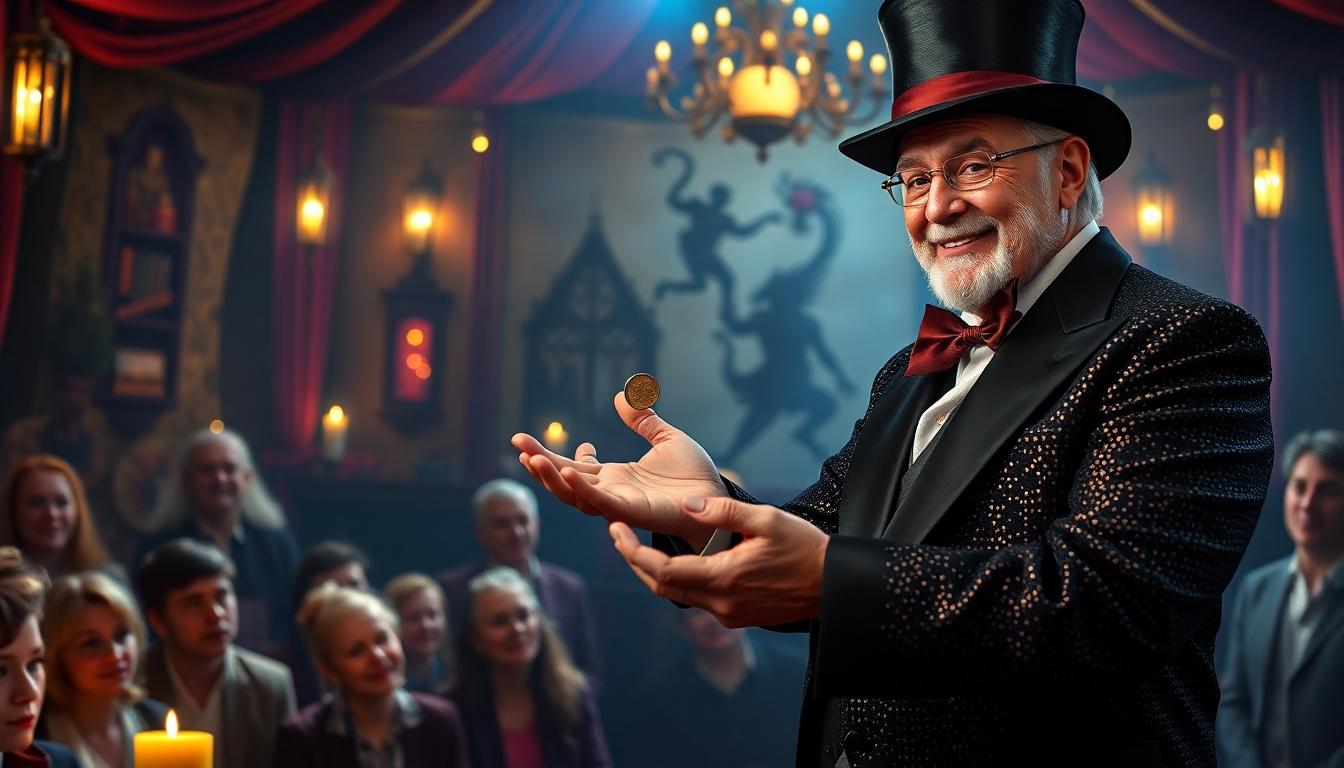
While many riddles come and go, certain magical brain teasers have captivated minds across generations with their clever misdirection and timeless appeal. These classic puzzles combine elements of mystery, illusion, and logical thinking that continue to challenge and delight people of all ages.
The Sphinx’s Riddle
One of the most enduring riddles in history comes from ancient Greek mythology and appears in Sophocles’ famous work “Oedipus Rex.” The formidable Sphinx posed this question to travelers: “What walks on four feet in the morning, two in the afternoon, and three at night?” Those who failed to answer correctly met a tragic fate. The answer, of course, is a human being – crawling as a baby, walking upright as an adult, and using a cane in old age. This metaphorical puzzle established the template for riddles that use symbolic language to obscure straightforward answers.
The Vanishing Coin Conundrum
Unlike purely verbal puzzles, the Vanishing Coin Conundrum blends physical illusion with mental challenge. Magicians frequently pair this sleight-of-hand performance with a verbal riddle such as: “I vanish without footprints, yet return with a touch. What am I?” The solution – a coin – makes complete sense only within the context of the performed trick. This classic combines the thrill of visual magic with the satisfaction of solving a verbal puzzle, creating a multi-layered experience that has entertained audiences for centuries.
The Impossible Knot Mystery
Common in the industry of escape artistry, the Impossible Knot presents viewers with what appears to be an unsolvable tangle. This physical puzzle often accompanies the riddle: “Bound without rope, released without hands. What is it?” The answer typically refers to a knot in a locked chest that can only be undone through hidden mechanisms or clever misdirection. Escape artists and magicians have used variations of this puzzle to create suspense and wonder, challenging audiences to think beyond obvious answers.
Literary Magic Riddles
Literary works have preserved some of our most beloved magical riddles. Lewis Carroll’s Mad Hatter famously asked, “Why is a raven like a writing desk?” Though originally intended to have no answer, later adaptations suggest the response “Because they produce notes.” Similarly, in the Harry Potter series, a sphinx presents a complex riddle beginning with “First think of the person who lives in disguise…” with a solution that requires spelling “spider” backward. These literary examples demonstrate how magical riddles transcend cultures and time periods, finding new audiences through beloved stories.
Magic Riddles for Modern Audiences
Modern Magic Riddles for Today’s Puzzle Enthusiasts
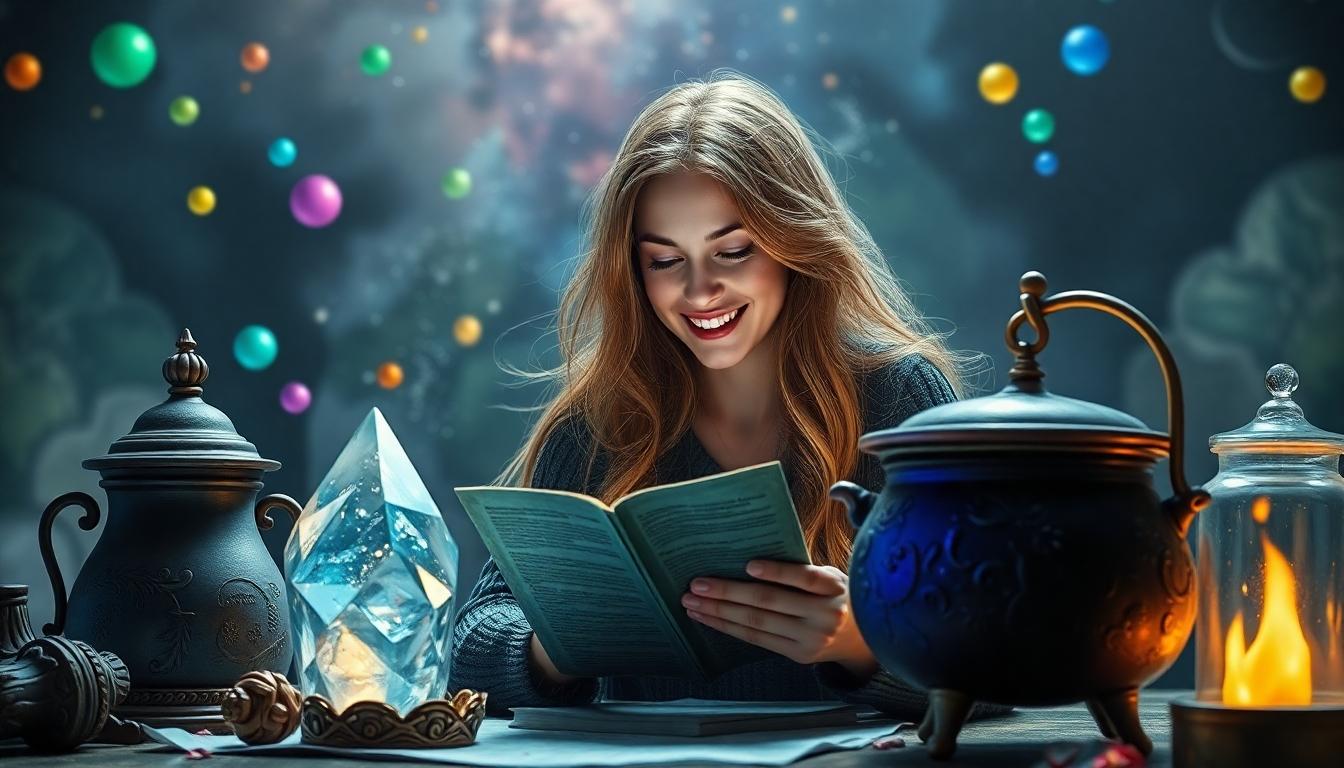
Magic-themed riddles blend folklore, fantasy, and wordplay to challenge your cognitive agility. These brain teasers typically feature enchanted objects like magic lamps that grant wishes and cloaks of invisibility that render wearers unseen. Metaphorical language creates the perfect puzzle environment, with riddles such as “I glow with ancient power but am not alive” (answer: magical crystal) or “I brew potions but don’t have hands” (answer: cauldron). The enduring appeal of magic riddles comes from their unique combination of mystery and logic, captivating both narrative imagination and problem-solving skills.
Digital-Age Magical Brain Teasers
YouTube has become a premier platform for mind-bending magic riddles that incorporate visual storytelling and interactive elements. Videos now combine illusions with puzzles, creating multi-sensory challenges that weren’t possible in traditional formats. Digital riddles emphasize brevity and shareability, featuring puzzles like “I open only with the right spell” (answer: magical lock) or “I can trap someone with a single word” (answer: cursed item). Gamification elements have transformed these challenges, encouraging users to solve puzzles through timed challenges or collaborative online forums. Virtual and augmented reality technologies further enhance modern magic riddles, allowing puzzle enthusiasts to “interact” with enchanted items in immersive, multi-sensory experiences.
Social Media’s Favorite Magic Riddles
TikTok and Instagram host an abundance of short, quirky magic riddles that gain millions of views and shares. Popular examples include “What’s sparkly, giggly, and dances in the moonlight?” (answer: fireflies, framed as magical beings) and “I change the industry with a flick of my tip” (answer: magic wand). These viral puzzles prioritize creativity and simplicity while pairing riddles with whimsical visuals such as animated wands or glowing crystals for maximum engagement. Online communities actively crowdsource answers, fostering collective problem-solving and creating connections between puzzle enthusiasts worldwide. Classic tropes like flying carpets and magical mirrors remain staples in these forums, though they’ve been updated with contemporary language to maintain broader appeal among today’s social media users.
How to Create Your Own Magic Riddles
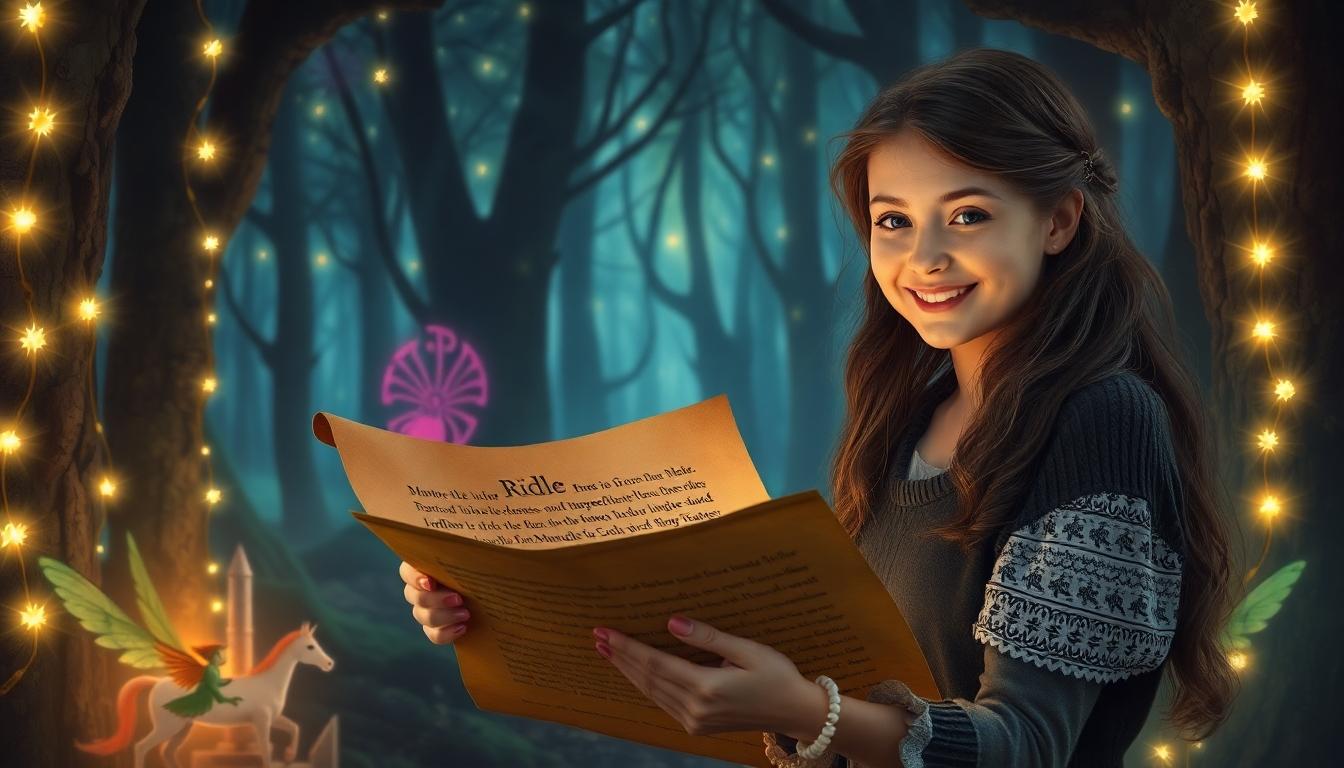
Creating magic riddles involves blending elements of mystery, symbolism, and clever wordplay to challenge and intrigue your audience. We’ll show you how to create compelling riddles that capture the essence of magic while testing the solver’s creativity.
Essential Elements of a Great Magic Riddle
- Enigmatic Language – Use metaphorical or allegorical expressions to cleverly conceal your answer while maintaining a mystical quality.
- Clear Structure – Ensure your riddle follows a discernible pattern with a definite beginning and end to guide solvers through the puzzle.
- Misdirection – Incorporate subtle elements that lead solvers down false paths initially, creating that magical “aha” moment when they discover the true solution.
- Logical Coherence – Construct a riddle where the answer makes perfect sense once revealed, even if the path to discovery isn’t immediately obvious.
Step-by-Step Riddle Creation Process
Step 1: Choose a Theme or Object
Select something inherently magical or mysterious as your riddle’s subject. Mythical creatures, magical artifacts, or supernatural phenomena make excellent foundations for captivating riddles.
Step 2: Use Metaphorical Descriptions
Create descriptions that require interpretation rather than literal understanding. Transform your subject through creative comparisons that mask its identity while providing subtle clues.
Step 3: Add Misdirection
Insert clever distractions that initially point solvers toward incorrect answers. This element creates the delightful surprise that makes magic riddles so satisfying to solve.
Step 4: Finalize the Riddle
Polish your language to create a smooth, flowing riddle that maintains a consistent magical tone throughout. Consider this example:
“In darkness I shine, yet I am not of light. I bring hope to those who seek, though my path is not always bright.”
The answer, a magical star or guiding spirit, becomes clear once the solver looks beyond the literal contradictions to find the metaphorical truth within.
Magic Riddles for Children: Building Young Minds

Magic riddles offer an enchanting way to challenge children’s developing minds, seamlessly blending the wonder of magic with the cognitive benefits of problem-solving. These captivating puzzles create the perfect environment for children to think critically while having fun in a magical context.
Age-Appropriate Magical Challenges
For younger children (5-7 years), we recommend introducing simple riddles with magical themes that serve as gentle introductions to problem-solving. These might feature friendly wizards, talking animals, or enchanted objects that appeal to their vivid imaginations. The straightforward nature of these puzzles helps build confidence as children begin their journey into critical thinking.
Older children (8-12 years) thrive with more complex magical challenges that incorporate advanced logic and clever wordplay. At this age, they can tackle riddles involving magical transformations, spell ingredients, or enchanted journeys that require multiple steps to solve. These more sophisticated puzzles match their developing cognitive abilities and growing knowledge base.
Educational Benefits of Magic Riddles
Magic riddles deliver important developmental advantages that extend far beyond entertainment. Children who regularly engage with these magical brain teasers experience enhanced critical thinking as they analyze information, think logically, and discover creative answers to puzzling scenarios.
Creative thinking flourishes when children immerse themselves in magical contexts, improving their imagination and problem-solving abilities that transfer to subjects like science and mathematics. The unique vocabulary found in magic-themed riddles exposes young minds to new words and concepts, expanding their language skills naturally.
Confidence blooms each time a child successfully solves a magical challenge, building self-esteem through achievement. This sense of accomplishment motivates them to tackle increasingly difficult puzzles with enthusiasm rather than frustration.
Magic riddles also create valuable social opportunities when shared in groups. Children learn to collaborate, communicate their ideas clearly, and appreciate different perspectives—all while working together to unravel the mystery. These collaborative experiences strengthen social bonds and develop teamwork skills that benefit children throughout their lives.
Solving Techniques for Seemingly Impossible Magic Riddles
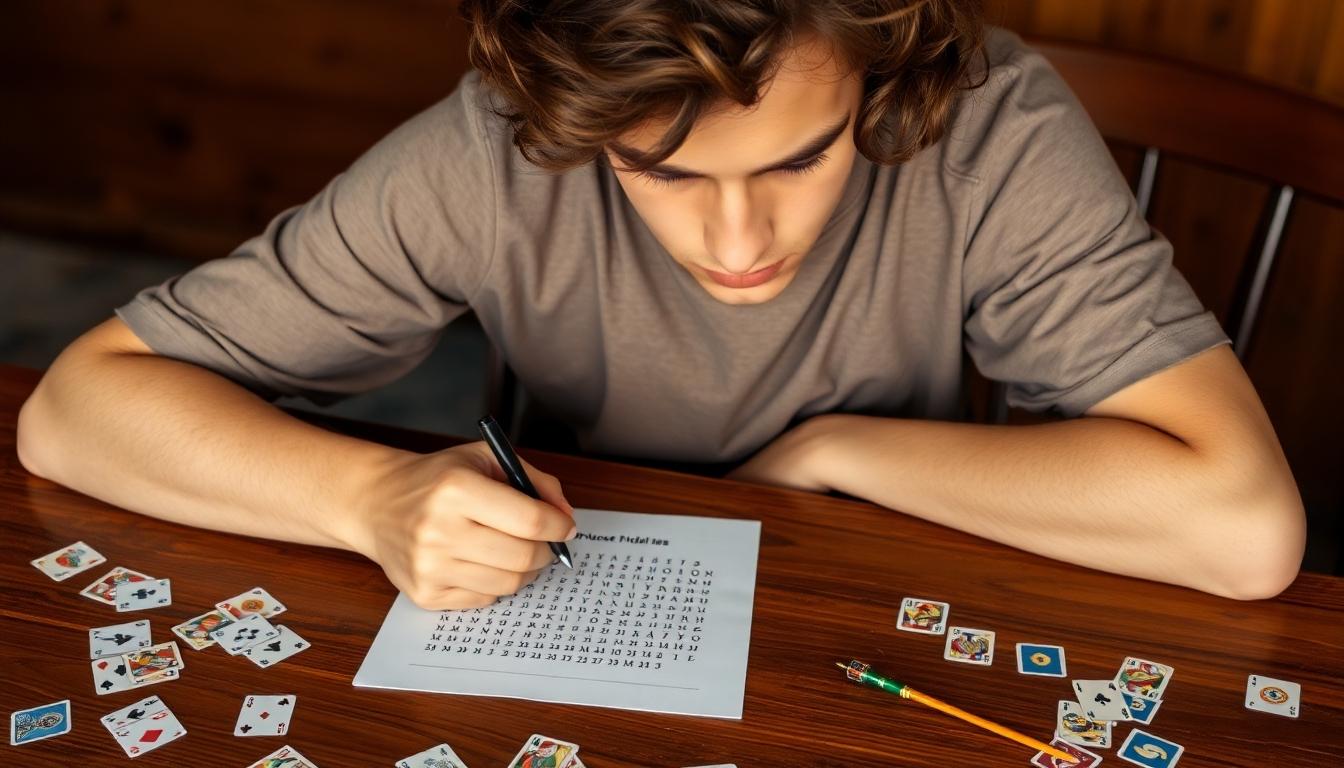
Magic riddles often rely on misdirection and clever wordplay to create puzzles that seem impossible at first peek. We’ve compiled essential techniques to help you tackle even the most challenging magical brain teasers.
Breaking Down the Misdirection
Identify the Trick in every magic riddle by recognizing that these puzzles deliberately use language to mislead you. Look for words with double meanings or phrases that could be interpreted in multiple ways.
Clarify the Question before attempting to solve the riddle. Many seemingly impossible magic riddles contain multiple layers of meaning, so understanding exactly what’s being asked helps cut through the confusion.
Focus on Key Words that stand out or are emphasized in the riddle. These often contain subtle clues that point toward the solution when interpreted correctly. Paying special attention to unusual word choices or emphasized terms will frequently reveal the hidden path to the answer.
Pattern Recognition in Magic Puzzles
Look for Common Themes across magic riddles to help identify answers. Many magical brain teasers incorporate everyday objects used in unexpected ways, such as cards that “disappear” or knots that “untie themselves.”
Consider Actions and how they might be interpreted differently within the context of the riddle. For instance, “throwing” a ball could mean tossing it upward or hosting a formal dance event. This lateral thinking approach unlocks answers that aren’t immediately obvious.
Use Logic as your foundation when tackling magic riddles. While these puzzles often seem magical, they typically rely on logical principles and physical laws to create their illusions. Approaching each challenge with rational thinking will help you uncover creative answers that initially appear impossible.
Famous Magicians and Their Signature Riddles
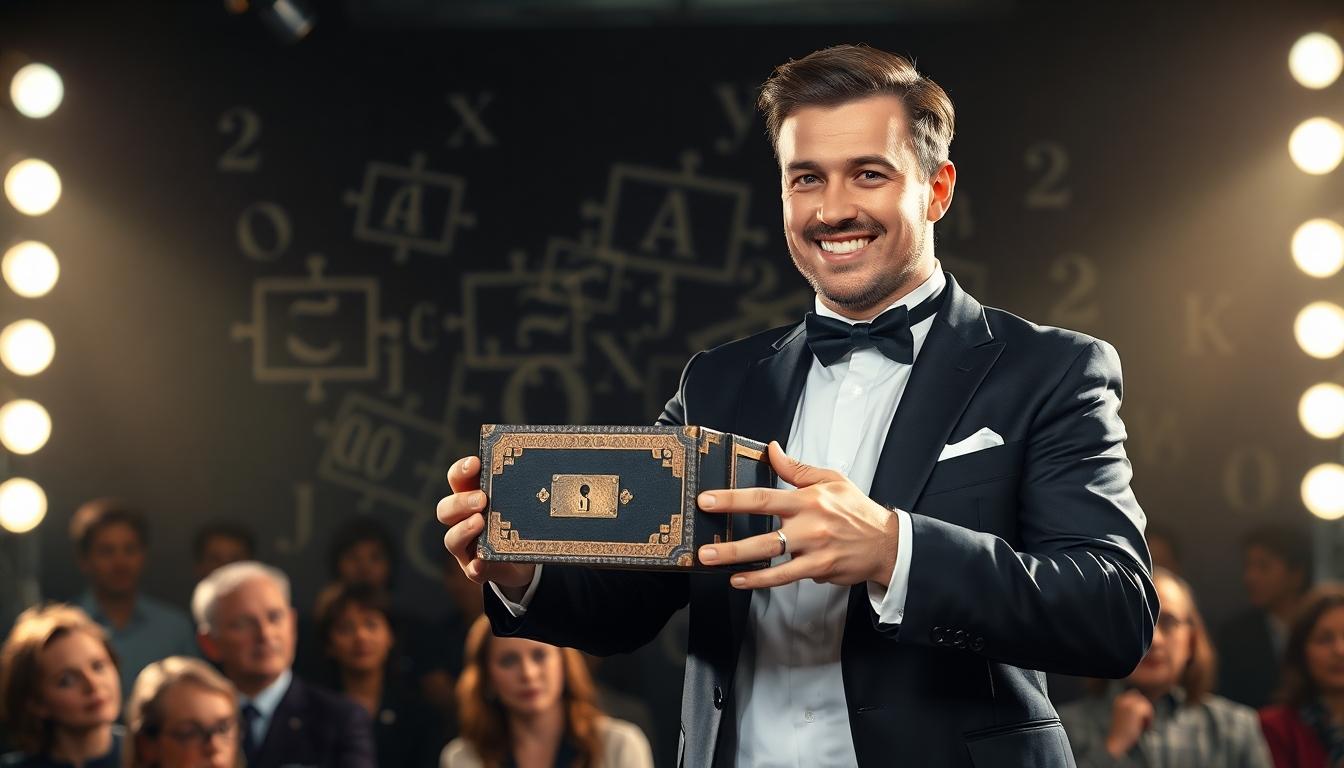
While traditional magic shows often focus on visual illusions, many renowned magicians incorporate cryptic puzzles and mental challenges that function like riddles within their performances. These intellectual elements add layers of mystery that engage audiences beyond mere spectacle.
Houdini’s Mental Challenges
Harry Houdini, though primarily celebrated for his death-defying escapes, masterfully embedded psychological elements into his performances that functioned as implicit riddles. His entire act posed a fundamental question to audiences: how could a mortal man survive seemingly impossible situations? Every locked chest, every water tank, every straitjacket became a living riddle that spectators mentally wrestled with while watching his performances. Houdini’s genius lay in creating these unspoken puzzles where the solution remained tantalizingly out of reach, challenging viewers to reconcile what they witnessed with what they believed possible.
Modern Magicians Keeping the Tradition Alive
David Kwong stands at the forefront of puzzle-based magic, creating performances that deliberately blur the line between illusion and cryptography. His acclaimed show The Enigmatist transforms magic into a multi-layered puzzle experience where audiences actively decode ciphers and solve crosswords that become integral to the tricks themselves. Spectators don’t just watch Kwong’s magic—they participate in solving it in real-time, creating a uniquely interactive experience.
Comedy magicians have developed their own approach to magical riddles through humor-based presentations. Terry Seabrooke, creator of the famous Fire Wallet trick, used witty misdirection that turned each effect into a playful conundrum for audiences. The Great Tomsoni, who mentored the famous duo Penn & Teller, similarly employed comedy to frame his illusions as puzzles with unexpected answers. These performers demonstrate how magic routines themselves can function as elaborate riddles, where laughter often precedes the moment of astonishment when the solution is finally revealed.
Magic Riddles in Popular Culture
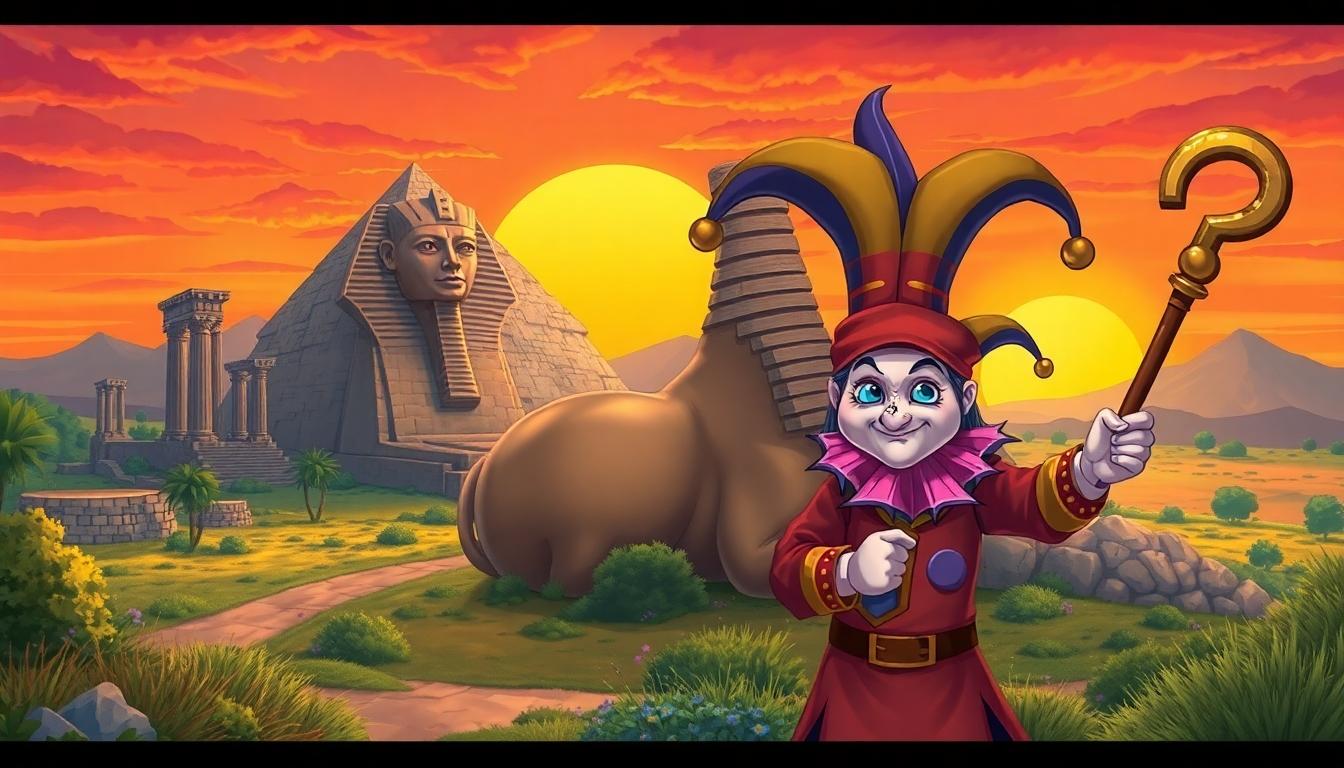
Magic riddles serve as powerful gatekeepers and tests of wit across various cultural narratives. In Greek mythology, the Sphinx’s famous riddle “What walks on four legs in the morning, two legs in the afternoon, and three legs in the evening?” challenged travelers with life-or-death consequences. Batman’s nemesis The Riddler, particularly Jim Carrey’s portrayal, employs complex numbered riddles connected to his crimes, blending wordplay with logical challenges. Stephen King’s literary masterpiece “The Dark Tower” features Blaine the Mono, a sentient train eventually defeated through absurdist riddles that exploit his inflexible logical processing.
From Books to Movies: Magic Riddles in Entertainment
Popular literature has embraced magic riddles as pivotal plot devices throughout the years. Bilbo Baggins engages in a tense riddle duel with Gollum in “The Hobbit,” where puzzles like “An eye in a blue face…” determine survival while merging clever wordplay with psychological tension. Lewis Carroll’s “Alice in Wonderland” presents the Mad Hatter’s famously unresolved riddle “Why is a raven like a writing desk?” which perfectly embodies Carroll’s nonsensical literary style. Monty Python and the Holy Grail delivers a hilarious parody of traditional riddle tropes through the Bridgekeeper’s three-question trial, subverting expectations with surreal humor that resonates with audiences. These entertainment examples demonstrate how magic riddles transcend mere puzzles to become important narrative elements that advance plots and reveal character traits.
Viral Magic Riddles That Broke the Internet
Modern magic riddles have found fertile ground in social media platforms, adapting classic structures for contemporary audiences. Self-referential riddles challenge perception by incorporating their own answers within their structure, making them particularly shareable online. Numerical enigmas gain traction through seemingly impossible mathematical scenarios that require thinking outside conventional parameters. While exact viral examples aren’t cited in our research data, the format of magic riddles perfectly suits social media’s engagement-driven environment, where brief, challenging content tends to generate important discussion and sharing. These digital-age magic riddles often include visual components or interactive elements that leverage platform-exact features, improving their ability to spread rapidly across online communities.
The Future of Magic Riddles in the Digital Age
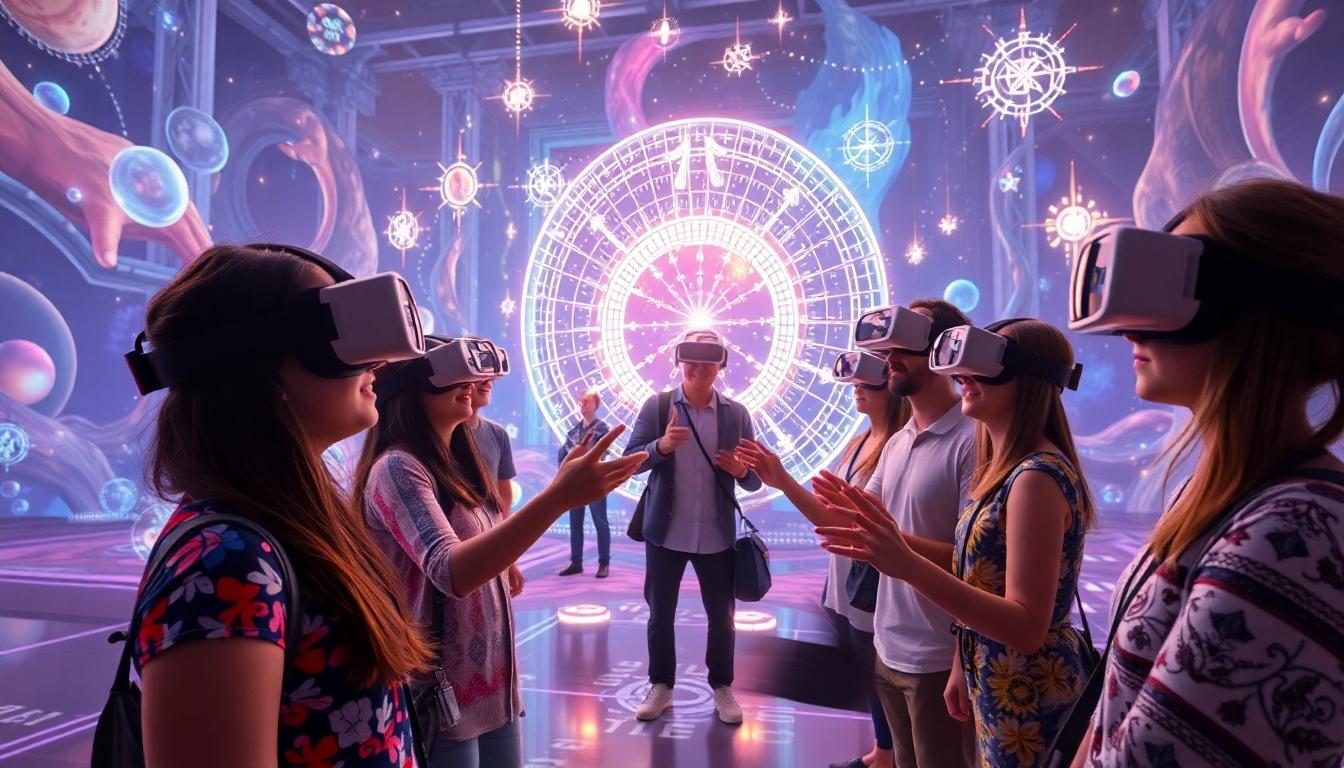
Magic riddles are undergoing a fascinating transformation as they merge with cutting-edge technology, creating an entirely new industry of enchantment and challenge for puzzle enthusiasts.
AI-Generated Magic Puzzles
Artificial intelligence is revolutionizing how magic riddles are created and experienced. Modern AI systems can analyze patterns from thousands of classic riddles, identifying successful elements like the “ancient tomes” references commonly found in wizard-themed puzzles. These intelligent systems produce layered, context-aware challenges that adapt to individual preferences through sophisticated machine learning algorithms. The puzzles they generate evolve in complexity as users progress, creating personalized experiences that keep solvers engaged. For example, AI can create riddles resembling the “ballet of bits” concept often used in encryption algorithm puzzles, making complex technological concepts more accessible through magical metaphors. We’re witnessing the birth of ever-changing riddles that change and grow alongside their users, offering an unprecedented level of customization in the puzzle-solving experience.
Virtual Reality and Interactive Magic Riddles
Virtual reality has opened new dimensions for magic riddles by creating fully immersive puzzle-solving environments. VR technology enables users to physically interact with magical elements in three-dimensional spaces, manipulating virtual “portals” or encountering “invisible” guardians as part of the riddle-solving process. Global collaboration features allow participants from different continents to work together on interconnected puzzles in real-time, reflecting the “timeless messenger” concept found in digital communication riddles. Cross-technology approaches blend AI-generated narratives with augmented and virtual reality components, creating hybrid formats where puzzles adapt based on user behavior. A “digital library” riddle might transform into an interactive search that responds to the solver’s decisions, while “password manager” security metaphors inspire puzzle mechanics that protect virtual treasures. Even though technical challenges like VR latency issues, the multi-sensory experiences offered by these technologies are maintaining the mystique of traditional riddles while expanding their educational and entertainment value in unprecedented ways.
Conclusion: Why Magic Riddles Continue to Captivate Our Imaginations
Magic riddles stand as timeless portals to wonder beckoning us to see beyond the obvious. Their enduring appeal lies in how they blend enchantment with intellect creating experiences that challenge and delight in equal measure.
From ancient philosophers to modern digital platforms these captivating puzzles have evolved while maintaining their essential magic. They’ve transformed from oral traditions to interactive experiences without losing their power to make us question perceive and discover.
Whether you’re solving a classic conundrum or creating your own magical brain teaser you’re participating in a tradition that spans cultures and generations. So next time you encounter a magic riddle remember it’s not just a puzzle but an invitation to experience the extraordinary in the everyday.
Frequently Asked Questions
What are magic riddles?
Magic riddles are captivating brain teasers that blend illusion with puzzle-solving to challenge conventional thinking. They’re designed to encourage creative problem-solving while entertaining the solver. These riddles often use misdirection and clever wordplay to create a sense of wonder and mystery when the solution is revealed.
What makes magic riddles different from regular riddles?
Magic riddles incorporate elements of illusion and surprise that regular riddles may lack. They often play with perception, creating an “aha” moment when solved that feels magical. While regular riddles focus primarily on wordplay or logic, magic riddles add layers of misdirection and unexpected solutions that create a sense of wonder.
What is the history behind magic riddles?
Magic riddles trace back to ancient civilizations where they combined mysticism with intellectual challenges. The term “magic” has roots in ancient Greek culture. Throughout history, philosophers and spiritual traditions used riddles to stimulate critical thinking and moral reflection. The Sphinx’s Riddle from Greek mythology is one of the most famous early examples.
How do magic riddles benefit cognitive development?
Magic riddles enhance multiple cognitive processes by fostering introspection, creativity, and problem-solving skills. They require lateral thinking and can improve memory, concentration, and analytical abilities. For children especially, these riddles build critical thinking skills, enhance language development, and boost confidence when they successfully solve challenging puzzles.
What are some classic examples of magic riddles?
Classic examples include the Sphinx’s Riddle (“What walks on four legs in the morning, two legs in the afternoon, and three legs in the evening?”), the Vanishing Coin Conundrum, and the Impossible Knot Mystery. Literary examples appear in works by Lewis Carroll and the Harry Potter series, demonstrating their enduring cross-cultural appeal.
How are magic riddles used in entertainment?
Famous magicians like Harry Houdini and David Kwong incorporate riddles into their performances to engage audiences intellectually. In popular culture, magic riddles appear in movies, books, and games as plot devices or character challenges. The Riddler from Batman and puzzles in films like “The Hobbit” showcase how these riddles create narrative tension and audience involvement.
How can I create my own magic riddles?
To create magic riddles, use enigmatic language, establish a clear structure, incorporate misdirection, and ensure logical coherence. Start with your answer and work backward, using metaphors and multiple meanings to obscure the solution. Test your riddle on others to ensure it’s challenging but solvable, and refine it based on feedback.
How is technology changing magic riddles?
Technology is revolutionizing magic riddles through artificial intelligence that generates personalized, adaptive puzzles. Virtual and augmented reality create immersive puzzle-solving environments with three-dimensional magical elements. Social media platforms like TikTok and Instagram have popularized short, shareable riddles, while YouTube offers interactive visual challenges that engage multiple senses.
What strategies help solve difficult magic riddles?
To solve difficult magic riddles, look for misdirection in the wording, consider multiple meanings of key terms, and think beyond literal interpretations. Break down the riddle into smaller components, look for patterns, and sometimes drawing the scenario helps visualize solutions. Remember that magic riddles often rely on unexpected perspectives or overlooked details.
Are magic riddles suitable for children?
Yes, when age-appropriate. For younger children (4-7), use simple riddles with clear imagery. For older children (8-12), introduce more complex wordplay and logical challenges. Magic riddles help children develop critical thinking, creativity, language skills, and social interaction through collaborative solving. They also build confidence when children successfully unravel challenging puzzles.

